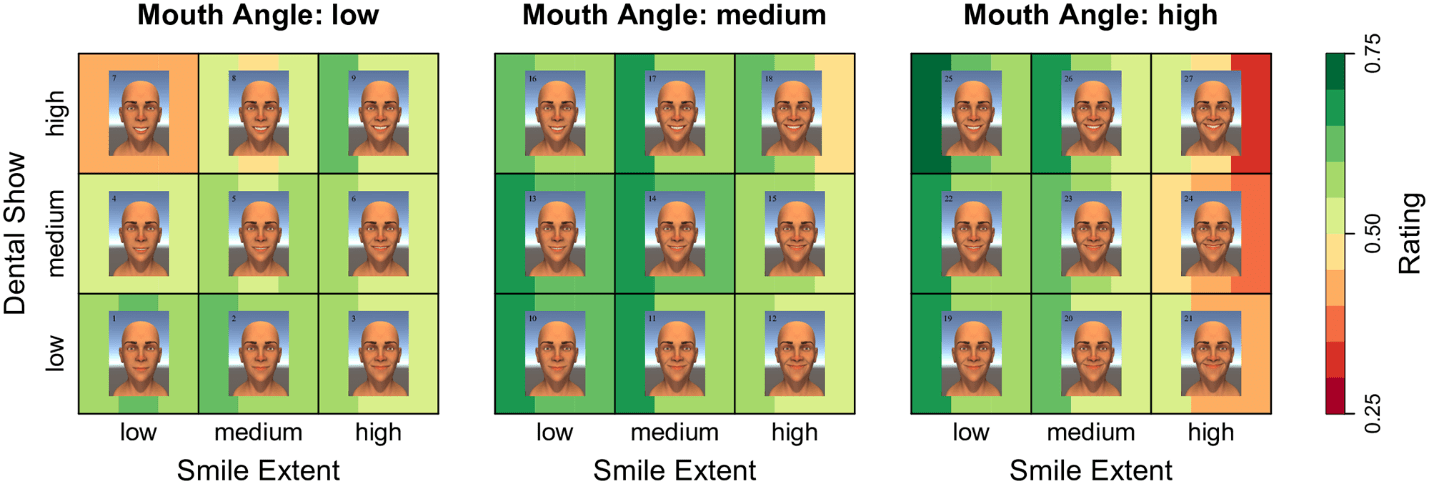 Everyone loves a good smile. While most of us think the bigger the better when it comes to our grins, it’s not necessarily the case. In fact, different smiles hold different meanings. In some cultures, they can be seen as a show of dishonesty or suspicion. And in the animal kingdom, smiles can be a show of strength or playfulness. When it comes down to it, a smile can open doors for new relationships and opportunities, or if given the wrong way, close them.
Everyone loves a good smile. While most of us think the bigger the better when it comes to our grins, it’s not necessarily the case. In fact, different smiles hold different meanings. In some cultures, they can be seen as a show of dishonesty or suspicion. And in the animal kingdom, smiles can be a show of strength or playfulness. When it comes down to it, a smile can open doors for new relationships and opportunities, or if given the wrong way, close them.
In a day when our smiles are posted on every corner of the internet for nearly anyone to see, have you over stopped to wonder what your smile signals to others?
The Importance of a Good Smile
The first few moments of an introduction can be the most important. Psychologists tell us we never really get a second chance to change a first impression. We form a number of strong opinions of someone within the first few seconds of meeting them. In fact, it’s so powerful that meeting someone for the first time activates the same part of the brain responsible for assigning prices to objects.
A good smile can set a meeting off on the right foot. This is because our smiles are contagious. Without knowing it we like to mime the emotions of others, and part of that is dependent on our facial expressions. If you walk into an important meeting with a stern look on your face, you can expect others to mimic your expression without the slightest intention.
All of these factors put extra pressure on your lips and teeth to perform and shine under the heat of so many expectations.
The Smile That Fits You Best
You may have heard that it takes 13 muscles to smile — or was that 24? Or 33?
The truth is that the typical person has 43 muscles in their face, and depending on the way you like to show your teeth, any number of them can be used to strike a grin. There are countless combinations that make each smile unique. This makes singling out a “best one” difficult. However, it hasn’t stopped researchers from making the attempt.
In 2015, Dr. Helwig and cohorts at the University of Minnesota went to the state fair to find just which smile the general public best responded to. With a catalog of 27 different types of smiles (culled down from a list of 250) they asked 802 festival-goers to rate and describe each smile. Their findings reflected the dilemma—there are a number of ways to showcase an effective smile.

Smile Ratings (Hehlwig, et al.)
People largely rated smiles positively across the entire spectrum. Whether you showed teeth or no teeth, or had a high angle or a low angle smile, each unique expression has something special to offer.
However, there were some surprising results that we need to keep in mind. One of those being that more isn’t always better when it comes to smiling. Smiles at a high angle with a lot of teeth were rated the most poorly of all the smiles. A key part of the response to that particular smile may be that it doesn’t seem all that genuine.
Posing a smile is a relatively new phenomenon, and may be partly to blame for some immaculate smiles coming across as artificial. Prior to the introduction of photography, people didn’t smile for the heck of it. They smiled only when it truly meant something. According to researchers at the University of California Berkeley who recently ran an analysis on nearly 40,000 high school year book photos from 1905 to 2013, as pictures and portrait photography becomes more common, our smiles grow larger and more unbelievable.
This doesn’t mean a big smile is a bad one, it just means that authenticity matters.
Your Natural Smile is the Best Smile
The lesson here is that there is no such thing as a “bad smile.” For instance, while researchers noted there is plenty of research showing that people prefer symmetrical faces, an asymmetrical smile can actually increase the quality of a person’s smile to others. The reason for this is that people prefer distinctive smiles.
Modesty is the best policy when it comes to smiling. Generally speaking, these more subdued expressions can be viewed by others as the most attractive smiles because they’re typically the ones we give off naturally. So before walking into a meeting with strangers, instead of faking it, try thinking of something that makes you happy. Bask in it until it brings a warm smile to your face, and then walk through those doors and make an introduction to remember.
Do you have a smile that you’re proud of? Take a picture of it and share it with us on our Facebook page! Come on, let’s see those pearly whites shine!
